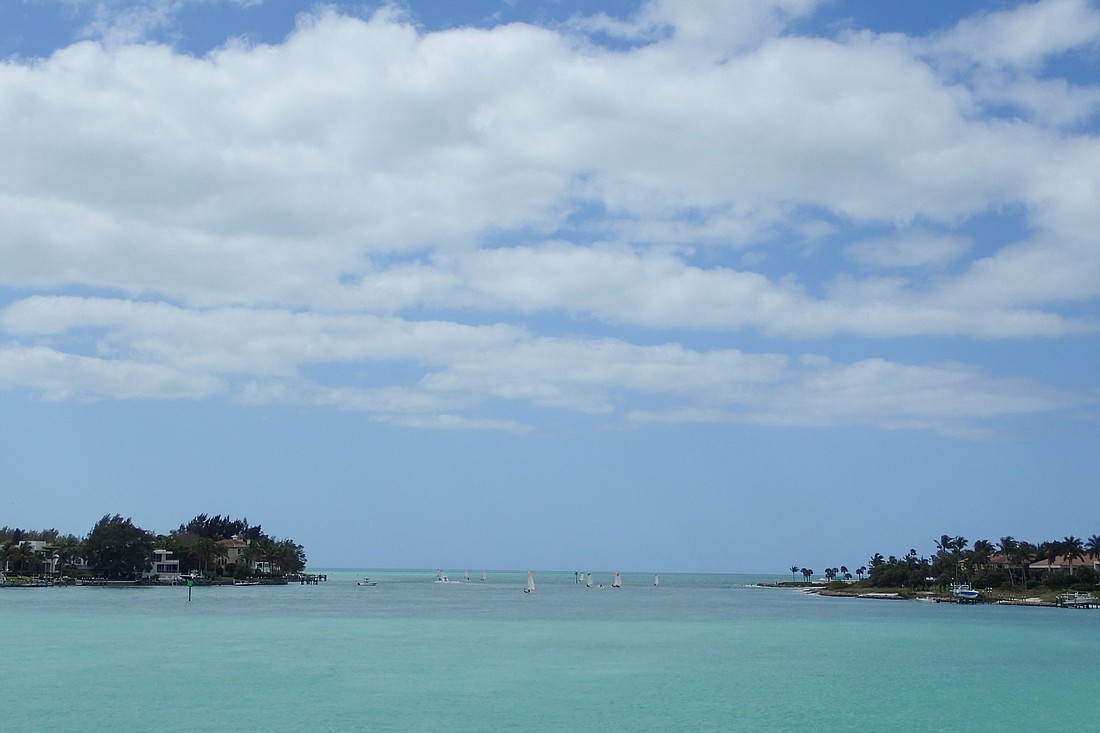- April 16, 2024
-
-
Loading

Loading

New Pass is becoming so shallow that the U.S. Coast Guard can’t get its boats in to measure the depth.
But there’s hope that the town’s plan to dredge the pass as part of its beach renourishment project will solve the problem.
The Coast Guard notified boaters Feb. 25 that it intended to remove six buoys and a channel light marking safe passage through the pass because it had become too shallow to navigate safely. Sand has been accreting at the entrance to the pass, a process known as shoaling, making it too shallow for some boats to traverse safely.
According to a survey conducted by the Coast Guard in June, water in the first 0.85 miles of a federal channel that runs through New Pass, as a boater enters from the Gulf of Mexico, is as much as 4 feet too shallow to be marked by the Coast Guard for navigation. That section must be at least 10 feet deep, and the remainder of the channel must be 8 feet deep for the Coast Guard to access it.
The Coast Guard was unaware then that Longboat Key was planning to dredge the pass. As a result, according to Coast Guard spokesman Darren Pauly, the removal will likely be temporary.
Pauly said that once the project is complete, the Coast Guard will remark the federal channel, the same portion of New Pass that Longboat Key will dredge to a depth of 13.5 feet as part of a beach renourishment project that will place 200,000 cubic yards of sand on the south end.
Still, some boaters aren’t convinced that the dredging will be sufficient.
“The New Pass dredging will open a narrow, 100-foot path that will likely not be sufficient to allow safe navigation given the severe shoaling just outside the entrance to the inlet,” wrote Armando Linde, Longboat Key Town commissioner elect, in an email to the Longboat Observer.
To reach the Gulf, Linde said, boaters must turn southwest and travel along Lido Key for a mile or more before they can find an exit. That wasn’t the case when he moved to Longboat Key five years ago.
Whether the dredging is sufficient to create a safe passage, the town may not always look to the pass for beach sand.
Town Manager David Bullock said the town dredges in New Pass because it costs less than dredging offshore or hauling sand in by truck. Because the town’s primary purpose in dredging the pass is not navigation-related, dredging New Pass isn’t guaranteed to be part of the renourishment process. If there is not enough high-quality, white sand available in the federal channel – the only place in New Pass the town can dredge without doubling the time required for permits – it may be more cost effective to dredge elsewhere.
Bullock said the town will look, before the next renourishment, to identify any sites offshore that could produce the amount and quality of sand it wants.
He said he was not aware of any study done to determine how much sand travels south from Longboat Key beaches into New Pass during a given period.
Bullock said that while New Pass, Longboat Pass and several other shallow draft channels on Florida’s West Coast were once maintained by the Coast Guard, federal financing has not been requested or granted since the 1990s.
Linde hopes, however, to garner federal support for maintaining the channel, describing the pass as a key economic driver for the community.
“New Pass is the one way out to the gulf that best serves Sarasota and Longboat Key boating communities,” Linde said. “That’s an asset to the community.”